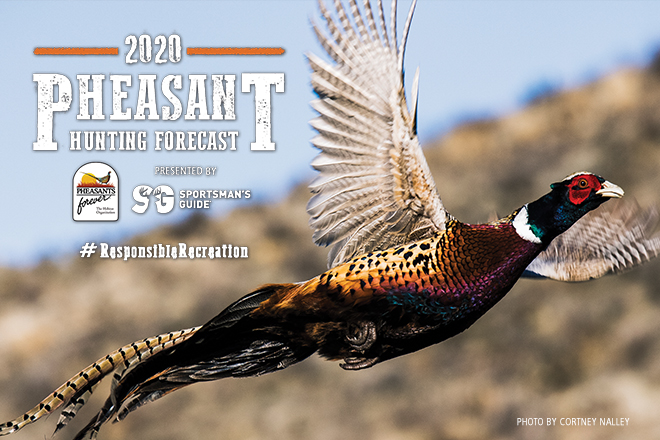
Decent winter, good spring and summer conditions: Badger State bird numbers should benefit
By Andrew Johnson
Editor’s Note: If you’re reading this forecast, you must hunt pheasants. If you hunt pheasants and don’t belong to Pheasants Forever or you need to renew, it’s time. Since inception, PF has impacted over 19 million acres of habitat, and created over 200,000 acres of permanently public wild places to hunt and recreate. Upland habitat, public lands and hunting heritage need you. Join, renew or extend and for a limited time get a sweet PF Field Hoodie to boot!
Decent winter, good spring and summer conditions: Badger State bird numbers should benefit
Based on the state’s small-game harvest survey, approximately 40,176 hunters took to the fields last year and harvested an estimated 418,480 pheasants (this figure includes stocked and wild birds).
In similar fashion, last fall’s harvest total is almost identical to 2018, when an estimated 485,815 birds were harvested, says Alaina Gerrits, assistant upland wildlife ecologist for the Wisconsin Department of Natural Resources.
WEATHER, BROODS AND HABITAT
Gerrits says winter weather, especially in the southern half of the state, was relatively mild and that much of Wisconsin had moderate amounts of snow. Even better, she says the state didn’t suffer from any long-lasting cold snaps with temperatures below zero.
“There was also an abundance of standing crops left over winter in the southern half of the state that likely provided food and cover for birds,” she explains. “Unfortunately, we were unable to conduct our normal spring surveys due to COVID-19 restrictions and cannot provide any index on over-winter survival or spring recruitment. We also cancelled our traditional 10-week brood survey due to lack of participation and uncertainty in results. However, we are in process of developing a citizen science-based mobile application to help increase participation and ease of use when conducting our 10-week brood surveys in the future.”
Although the spring and summer routes weren’t run this year, Gerrits maintains that brooding conditions were good this year, even if they were relatively dry and warm.
“Any significant weather events that occurred were highly localized and likely had no population-level impact,” she says. “Field staff were not as active as normal due to COVID-19, but all reports show that nesting was on time and many broods of various species were reported anecdotally. Luckily, field operations have resumed in recent weeks, and we anticipate plenty of hunting opportunities on prime grassland habitat throughout much of the state.”
TOP SPOTS
Historically, the prairies found in Pierce, St. Croix and Polk counties are home to the highest populations of wild birds, and Gerrits says it’s likely these areas will be top producers again this fall.
“I would point hunters towards the western and northwestern parts of the state to pursue our few remaining pockets of wild birds,” she says. “Some counties to try include would be Polk, Barron, St. Croix, Dunn, Pepin, Pierce and Eau Claire.”
IF YOU GO
Gerrits says WDNR will be stocking fewer pheasants this year due to COVID-19 restrictions. She says the state will put out approximately 50,000 birds this year compared to 75,000 birds last fall. That being said, she fully suspects hunters will have many opportunities to pursue birds, especially in areas where pockets of wild birds remain.
She also highly recommends two extremely helpful tools available to pheasant hunters.
“First there’s our
FFLIGHT online application, which is an interactive mapping tool that shows all of our properties stocked with birds and even shows areas to park and other habitat types,” she says. “The other tool I would recommend is our
HuntWild mobile application that is a one-stop shop for regulations, shooting hours and interactive maps.”
Wisconsin’s 2020 pheasant season is open statewide from Oct. 17 to Jan. 3. For the first two days the daily limit is one rooster, then two roosters daily for the rest of the season.
Please note that on some public properties, the daily shooting hours have been moved from 2 p.m. to noon. Signs indicating the changes are posted on these properties.